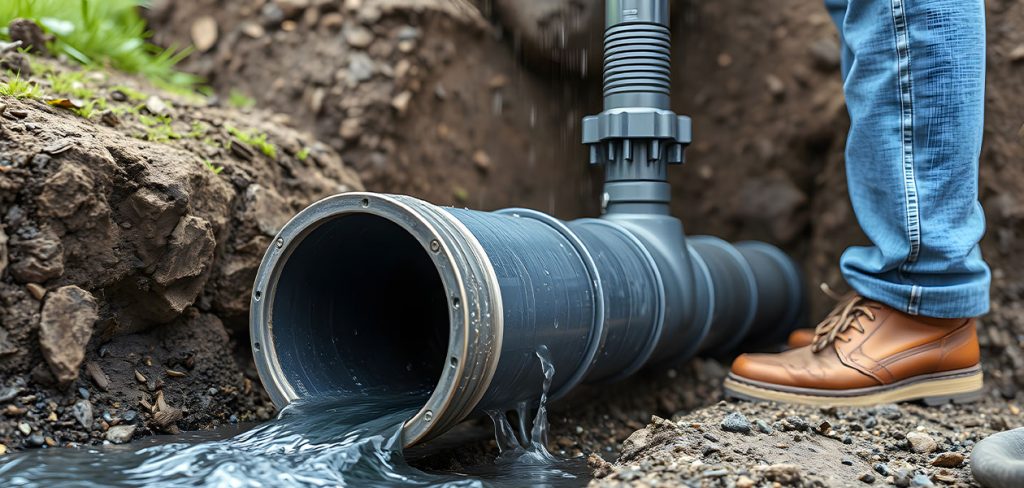A septic system is one of those things that people rarely think about—until something goes wrong. But when it comes to your home or business, having a properly designed septic system can make all the difference between smooth operations and costly repairs. If you want to avoid unexpected breakdowns or expensive maintenance, getting the design right from the start is crucial. But why exactly is proper septic system design so important for its longevity? In this blog, we’ll explore why investing in a well-thought-out septic design can save you time and money in the long run.
Proper Sizing Makes All the Difference
The lifespan of a given septic system will mainly depend on whether the user has the system properly sized for the correct number of people in that household or business. Anything less than proper sizing of that system just won’t stand a chance against the assault of your wastewater, possibly leading to overflows or backups of the drain field. On the other hand, an oversized system is just as problematic, causing incomplete wastewater treatment and clogging. Getting the right size ensures that your septic system will function well, processing the waste optimally. Proper sizing also reduces wear and tear on the system and makes it last much longer.
Site Evaluation: Understanding the Ground
Septic system design isn’t just about size, though. It’s also about location. A thorough site evaluation before installing a septic system ensures long-term performance. Some factors include soil type, ground slope, and water table levels, which greatly determine how your septic system will function. For instance, sandy soils are ideal for wastewater filtration, but clay soils may not let the water drain properly. Choosing the wrong site can lead to poor drainage, system overflows, and even a total failure of the entire septic system.
Drain Field Design: The Heart of the System
The drain or leach fields are arguably the most important part of the septic system in terms of durability over time. This is where the wastewater gets to be naturally filtered by the soil, and things get bad fast unless this is done right or properly taken care of. Proper drain field design considers factors such as the soil’s porosity, moisture levels, and available space. In addition, the system will not be able to absorb and filter the wastewater well if the field is too small or not well aerated. In the long run, this could lead to blocked pipes, poor drainage, and awful odors.
Quality Materials to Avoid Corrosion and Wear
The materials used in the design and installation of your septic system play a very significant role in its longevity. For example, high-quality materials such as concrete or plastic septic tanks last longer than cheaper, low-quality materials that are more prone to corrosion and cracking. Also, don’t forget the pipes connecting the septic tank to the drain field. Using materials that are resistant to corrosion and tree root intrusion is crucial. A well-constructed system, made from durable materials, ensures that your septic system will hold up over time, reducing the need for costly repairs or replacements.
Proper Ventilation: Maintaining a Healthy System
Just as you need fresh air, your septic system needs efficient ventilation. Without proper ventilation, gases build up inside the septic tank, producing hazardous situations and nasty smells. An aerobic septic system allows these gases to escape, so the system stays healthy and stench-free. A healthy system runs smoothly and is not prone to clogs or backups that could eventually break the system. Ventilation is like opening a window in a stuffy room—it helps your system breathe and stay fresh.
Regular Maintenance: The Key to Longevity
Proper septic system design sets the stage for a long-lasting system, but regular maintenance keeps it running smoothly. Even the best-designed systems need a little care now and then. Regular inspections, pumping, and cleaning are essential for ensuring that your system continues to function properly. Neglecting regular maintenance brings the danger of solid masses inside the tank, causing blockade-related failures in the whole system. Proper maintenance puts small problems in their position before they become big nightmares. Like when people take their cars in to prevent big breakdowns some other time, similarly good system maintenance can ensure that your designs for septic systems remain solid.
Smart System Features: Technology for Efficiency
Technology has advanced and is now available to help your septic system last longer. Advanced features such as effluent filters, alarm systems, and aerobic treatment units provide additional protection and efficiency to your septic system. For instance, effluent filters prevent solids from leaving the tank and entering the drain field, thus preventing clogging and extending the system’s life. Similarly, alarm systems alert you to potential problems, such as overflows or failures of the tank, before they escalate into larger, more expensive issues. Think of these smart features as upgrades that enhance your septic system’s overall performance and longevity.
Conclusion
In conclusion, proper septic system design is the cornerstone of a long-lasting, efficient system. By taking the time to consider sizing, site evaluation, drain field design, quality materials, ventilation, regular maintenance, and smart features, you’re setting yourself up for years of trouble-free operation. While it may cost a bit more upfront, the savings you’ll enjoy in repairs and replacements down the road will make it all worthwhile. When you build your septic system with longevity in mind, you’re not just investing in a necessary utility—you’re investing in peace of mind.

